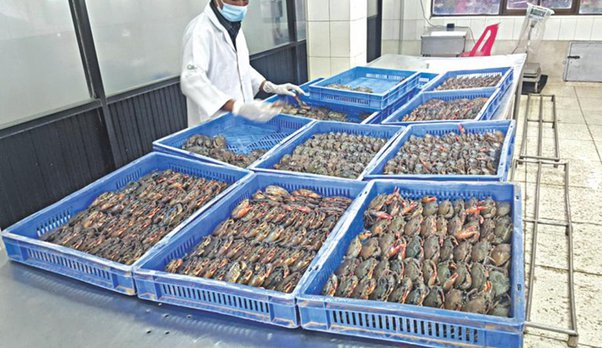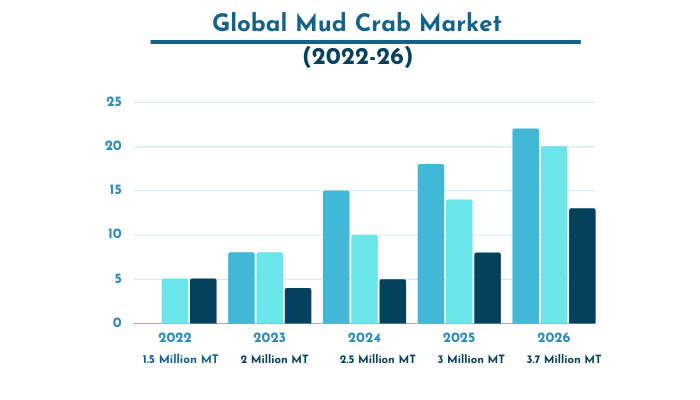Project Report For Mud Crab Farming
Introduction
Mud Crab Farming project report is as follows.
The economically valuable crab species Scylla Serrata, sometimes known as the mud crab, green crab, or mangrove crab, is found in Indian estuaries and mangroves.
Crabs are rich in protein, which is necessary for growing and maintaining muscle. Crab is a good source of vitamin B12, selenium, and omega-3 fatty acids. These vitamins and minerals are crucial for improving general health and preventing some chronic disorders. The omega-3 fatty acids present in crab provide many benefits related to heart health. These important nutrients can help lower triglycerides, and reduce blood clotting. One of the best forms of protein that can be consumed is crab. In terms of protein content per 100 grams, it is comparable to meat. All shellfish have a lot of selenium, but crab flesh has the highest concentration. Selenium plays a crucial role in the human body’s antioxidant defense mechanism, which guards against damage to cells and tissues.

According to studies, those who consume seafood, particularly crab, at least once a week have a lower risk of dementia and Alzheimer’s disease. The high omega-3 fatty acid content of marine products may have contributed to this defense. Due to its great demand on the global market, especially in South East Asian nations, it is a prospective candidate species for extensive commercial aquaculture. One of the best types of crab is used in this seafood dish. Rising per capita seafood consumption, rising earnings, and greater urbanization, which support rising seafood consumption, are the main factors driving the worldwide crab industry.
Sample Project Report of Mud Crab Farming
Get Completely Custom Bankable Project Report
Crabs of the species Scylla Serrata and Scylla tranquebarica can be eaten. Scylla Serrata is the scientific name for the mud crab or green crab. Farmers are interested in raising this species because of the size and quality of its meat, as well as the species’ high cost and export demand. Various names for mud crab are used in different Indian states. Mud crabs typically reach quite big sizes, with carapace lengths of 22 to 24 cm and weights of 2 to 2.5 kg. In the Scylla tranquebarica and Scylla Serrata species, the female crabs reach sexual maturity at a size of approximately 12 to 13 cm and 9 cm, respectively.
Market Potential Of Mud Crab Farming
The future of the crab industry is promising because of growing customer demand. The primary end-use for crabs is the food service sector, and as this sector grows, so will the direction of the global crab market. In contrast, research analysis predicts that by the end of 2026, the global crab market would reach 3.7 million metric ton.
Mud crab (Scylla Serrata), which is in high demand domestically and internationally, is well-known. The commercial scale of this culture is expanding swiftly throughout the coastline of India and its neighbors. Mud crab farming is also becoming more common in most of Asia’s countries. Kerala, Tamil Nadu, West Bengal, Karnataka, Andhra Pradesh, Maharashtra, Goa, Gujarat, Odisha, and the Union Territories are coastal states in India where mud crab culture is growing. The mud crab is a globally distributed crab species with substantial commercial value. The color of mud crabs’ shells varies, from a deep, mottled green to a dark brown. Mud crab farming is a significant secondary crop in prawn (shrimp) or fish cultivation systems.

When compared to other crab species, the Scylla Serrata variety has very strong market demand, and producers can anticipate strong returns. For export purposes, the medium to big size is typically favored (greater than 15 cm carapace and 500 grams in weight).
In 2020, China held the largest market share in the Asia-Pacific region, followed by South Korea and Singapore. In the Asia-Pacific region, crab exports increased from USD 270.8 million in 2017 to a record high of USD 412.6 million in 2020. According to research in China’s coastal provinces, intensive high-yield crab growing generates a gross profit per square meter of between USD 11,532.0 and USD 21,624.1, which encourages farmers to participate in domestic crab production.

